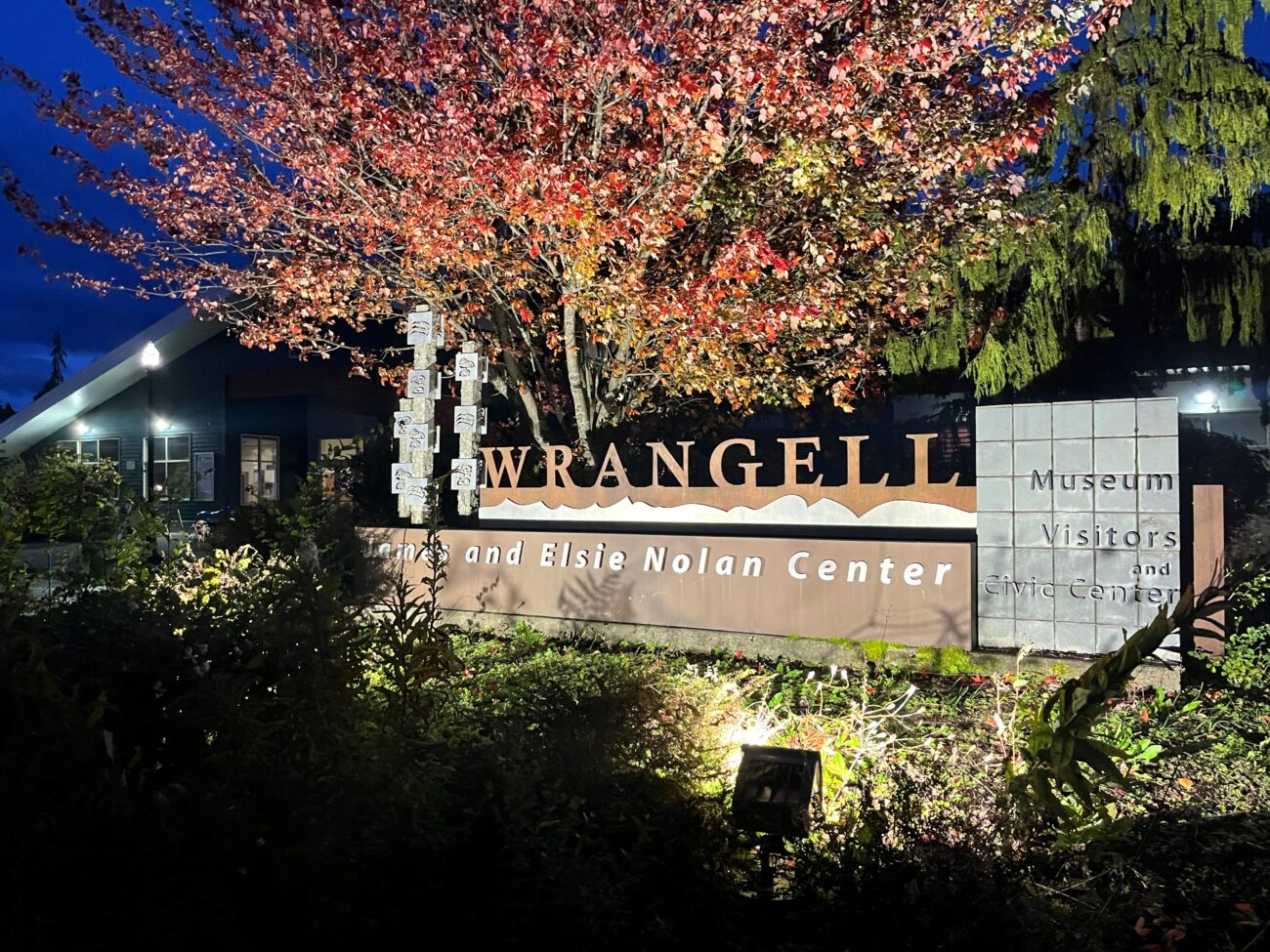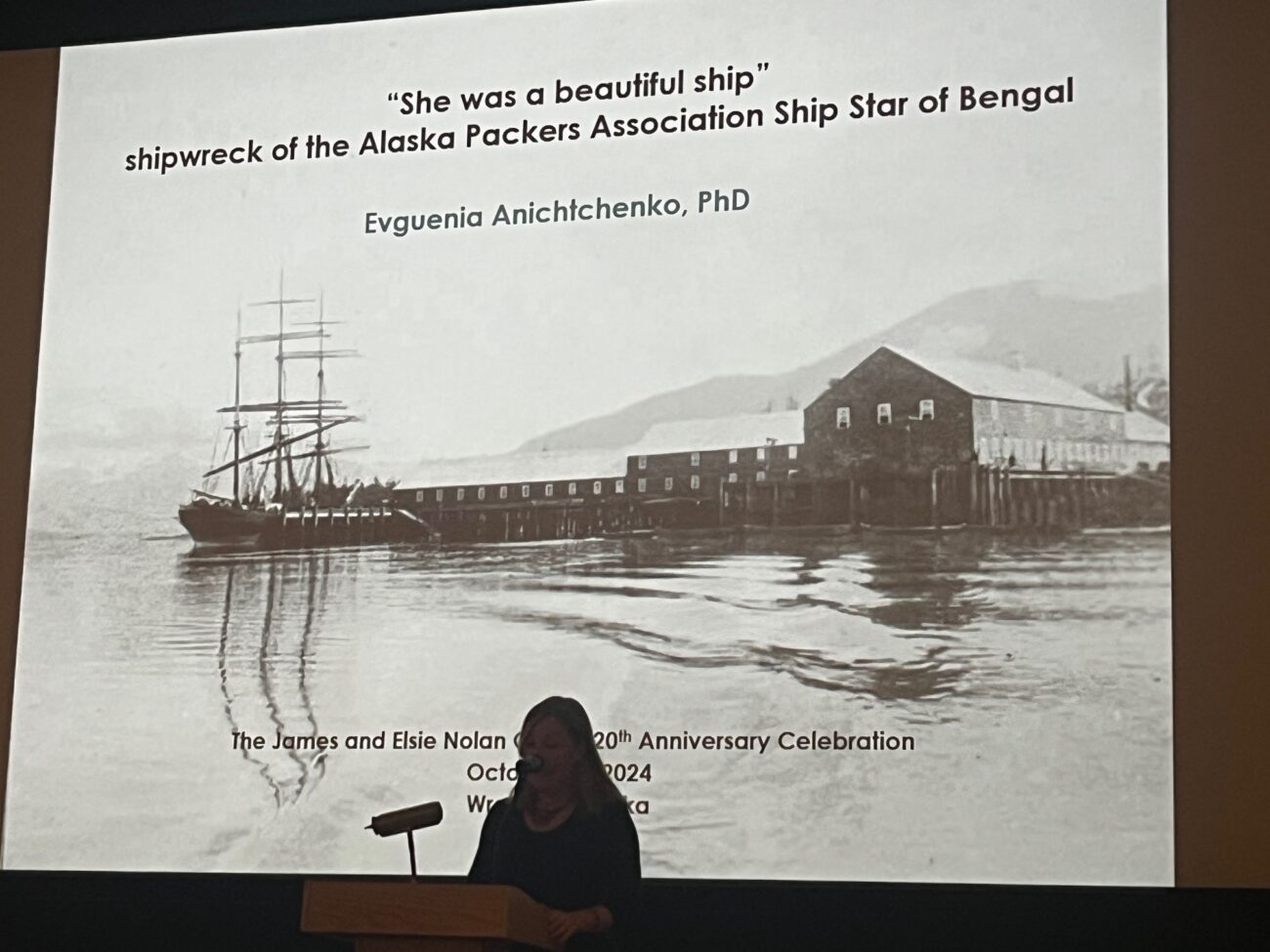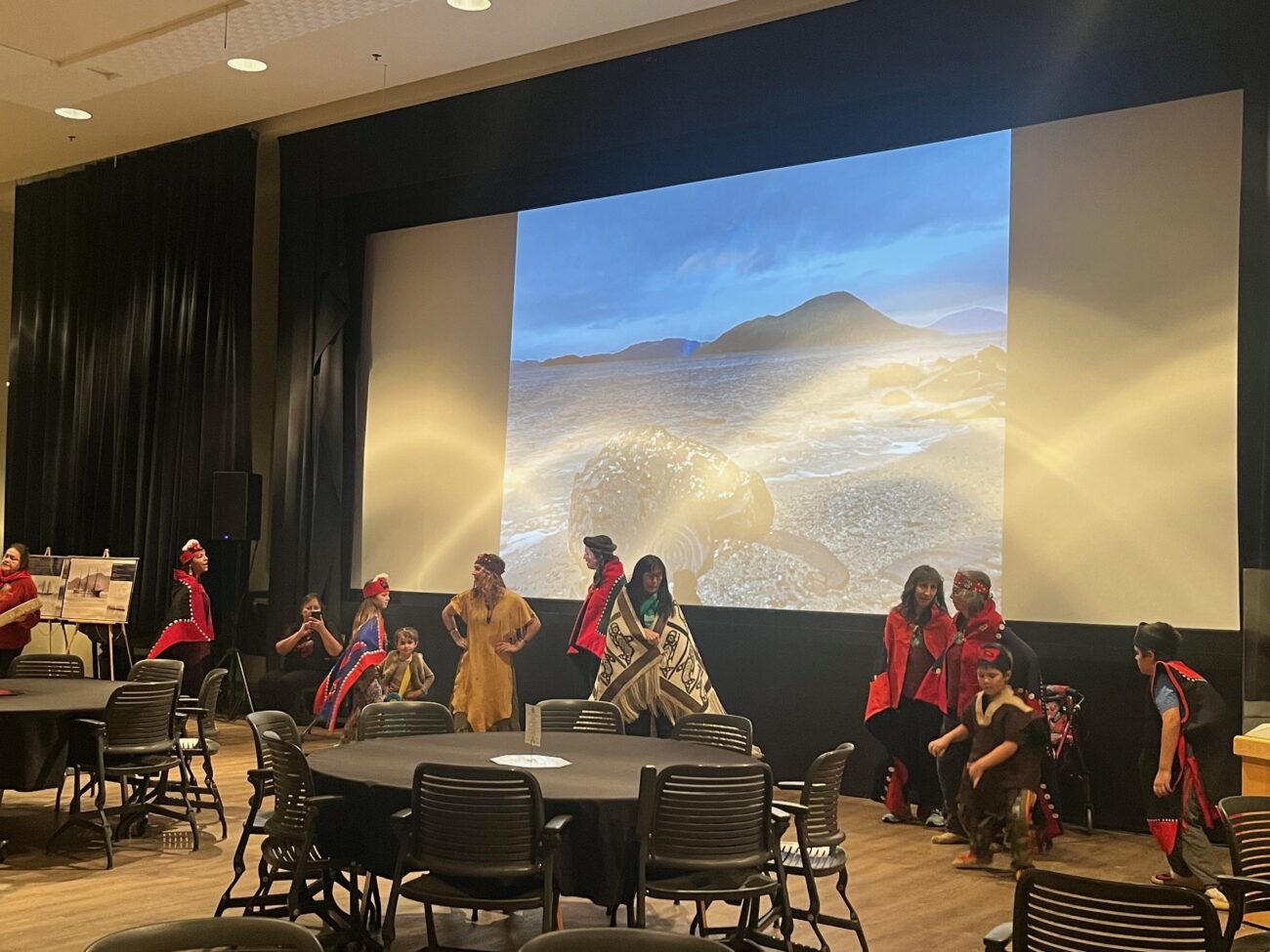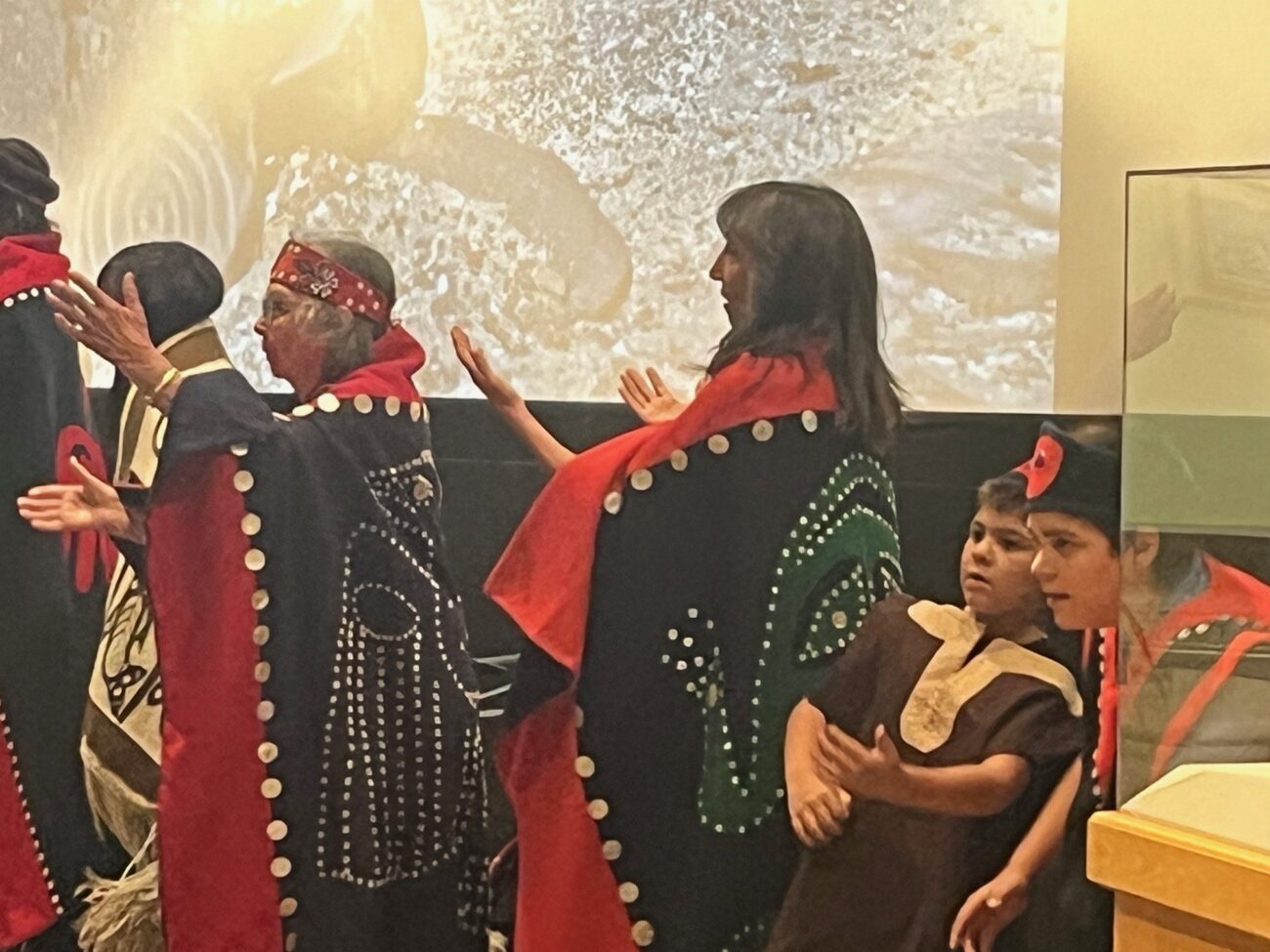
The James and Elsie Nolan Center serves as a cultural hub for Wrangell’s community and visitors. It houses the historical museum, Wrangell Visitor Center and hosts events, including the Nolan Center’s 20th anniversary celebration, which happened last month.
Community members participated in a potluck, listened to guest speakers and toasted with each other in commemoration.
Building it was made possible by James and Elsie Nolan through a $4.8 million endowment, the U.S. Department of Agriculture, the Rasmusan Foundation and community fundraising.
Jeanie Arnold, the Nolan Center’s director, said the space has held celebrations and sorrowful events. Even vaudeville shows were held there.
“Just the significance that it holds in a lot of people’s hearts in this community,” she said.
Arnold has been with the Nolan Center for almost a year.
“I feel like it’s been a bit of a whirlwind,” she said. “But at the same time, I have learned so much and just the experience that I have just in this first year, I think is going to just add to all of the events in the future and it really is just going to get better and better.”
She said the Nolan Center is important because of what it represents. Not only in terms of history, culture and historical preservation, but so many other things too.
“Our visitors in the summertime come here for enrichment in terms of the community of Wrangell,” Arnold said. “It really represents our town. I think, for people that stop here for a mere few hours, they can get such a great, rich history and kind of a snapshot of what it means to come from Wrangell.”
Arnold said people tell her all the time that Wrangell is really lucky to have a facility like the Nolan Center.
Visitors access the museum through the gift shop, where they move through a handful of rooms containing historical artifacts from Wrangell.
Those include tribal relics like a totem pole and bowls. Each room is an evolution of years, from the gold rush to commercial fishing.
Wrangellite and Friends of the Museum Board member Gig Decker said museums are not just a place to house artifacts, but they’re the conduit to the community.
“The Friends of the Museum are the connection to the community,” he said. “They’re the people in the community that draws people into the museum. And it’s a two way street. I mean, the museum presents things, people from the community bring stories.”
He said museums bring history to life.
“It’s one thing to know about history,” Decker said. “It’s another thing to read about it, but when you actually can go and look at things that were held and worked with 130 plus years ago, that’s a different level of appreciation of history, and that’s what museums bring to us.”
One of Decker’s fellow researchers is Underwater Archeologist Jenya Anichtchenko, who lives in Anchorage. She spoke at the commemoration about the Star of Bengal shipwreck. The ship wrecked roughly 80 miles from Wrangell in 1908 when it was bringing workers from Wrangell’s cannery back to San Francisco. The museum houses some artifacts from the wreck, like a mast bracket.

But the museum is more than that though. There’s also information on the Wrangell Institute boarding school, a section on music and the logging industry.
“It’s been really interesting,” Anichtchenko said. “It’s a journey, it’s important to have this connection with the community. And Gig is kind of our gateway to Wrangell but as I mentioned, we are trying to reach out to different coastal communities in Alaska to amplify the message of Star of Bengal.”
She said it’s difficult to talk about the story because she believes it belongs to the Wrangell community. She’s worked in other very small museums, such as the Museum of the Aleutians in Unalaska. She said it’s a place for conversations to deeply care for culture and everyday life.
And she said it feels like the Wrangell Museum is doing just that, which is while looking back, it’s connected to the present and looking into the future.
“You guys know this story,” Anichtchenko said. “This is part of your story, your personal connection to the land and the ocean, and nobody can do it better than you.”
After the presentation, the Wrangell JOM Kaats’litaan Dancers and other Wrangell dancers sang and danced to the welcome song.
Children led the way in front of the audience while the drum’s beats filled the open space.


Wrangellite Lu Knapp said she remembers when the Nolan Center opened up.
She said she worked in the old museum before when it was under the old gym.
“It’s really awesome having this here along with the civic center,” Knapp said. “We didn’t dream then that we’re going to be able to put our artifacts in here that we get returned because that was just starting. The first thing we got back was in 2008 with the Flotilla Killerwhale Robe. But I love this place.”
A place the community hopes will continue to be a hub in the years to come.












